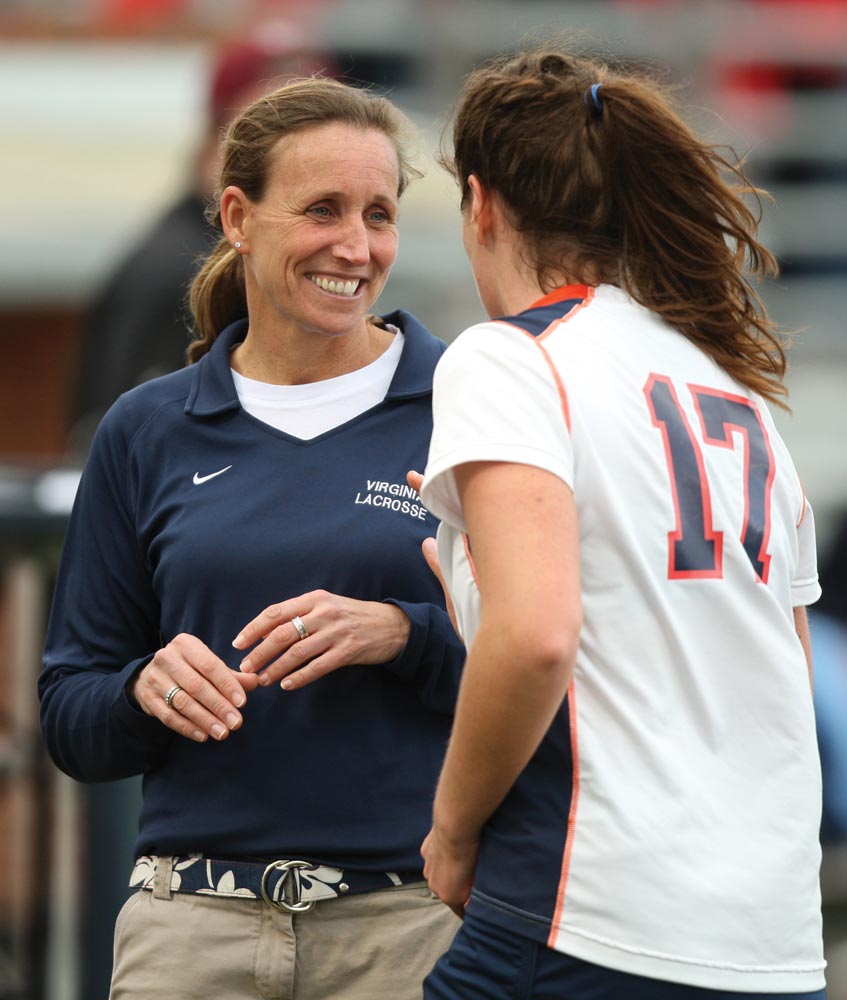Coming Together
Bonds forged by tragedy help lacrosse team move forward

The 2010 UVA women’s lacrosse season was one of the most challenging any collegiate team has ever faced. After the tragic death of teammate Yeardley Love, the Cavaliers pulled together and advanced to the NCAA quarterfinals, all the while honoring Love while under the glare of a national spotlight. Now in 2011, the roster shows more new faces than usual but features several key contributors returning to lead the way. Head coach Julie Myers took some time during the preseason to answer questions about the program and the team’s outlook.
How do you preserve the memory of Yeardley Love and last spring’s tragedy, but continue moving forward as a program and as a team?
I think we’re in a healthy spot, all things considered. Coming together so closely as a team at the end of last spring is something that we want to make sure we maintain forever. They really have stayed together, and they’ve taken a step forward in terms of decisions, and things to look out for—when do they say something to a friend, and when do they help somebody out. There’s a heightened awareness about relationships and life in general. We don’t take it all for granted so I think we’ve moved forward by staying together, opening our eyes and being a voice.
Bringing in 10 new first-years, a mid-year transfer and other new faces is a seismic shift in the program’s makeup. How is the new group working into things?
We’re definitely naïve, but we also know how to work hard, and we think we need to play that to our favor. The first-year kids did a great job in the fall, but in addition to our three returning players who missed the fall because they were recovering from ACL injuries, we have three new kids in the mix as well. It was a big opportunity year—we knew bringing 10 in was going to be a big class for us, but we also knew we could provide them with some opportunity for great practice moments and game experience.
Lauren Goerz, a Cal-Berkley transfer, is one of just a few transfers the program has ever taken. How did that come about?
They canceled their program, so they’re going to play just this last year, and Goerz was a first-year from California. One of our former players [three-time all-American and 2007 graduate Nikki Lieb] is one of the coaches at Cal, and their head coach is someone we really respect. They called and said, “Our program is getting canceled and we’ve got an awesome player for you.” We’re excited to get her.
How has Charlie Finnigan (Col ’12), coming from England, ingrained herself in the team’s dynamics?
Last year when she came in, even though we all speak English, our words mean really different things. That was apparent from day one. Now we’re all on the same page—she understands where we’re coming from a bit better and we understand where she’s coming from better. She’s a more casual player than what we’re used to. But she’s really starting to tighten things up, and we’re trying hard to embrace the freeness that she plays with.
Where will the offensive firepower come from this season with the loss of three 40-goal scorers?
Charlie [Finnigan] definitely emerged as one of our best attackers [in the fall]. That said, Josie Owen (Col ’12) and Ainsley Baker (Col ’11) missed the fall with their ACL injuries. So Charlie had to do an awful lot offensively, and I think she’s going to be excited when her cohorts come back and help her share that load.
The departure of Brittany Kalkstein (Col ’10) leaves a big hole in the midfield. Has a solution emerged there?
We’ll miss Brittany on her draw controls above all else, and I think people will notice. We’re trying to figure out who comes next in that spot. She had an art for winning a draw; she had great hands and could find the ball. It’s probably going to be a shared position for a lot of kids because [players like Brittany] don’t come around that often in terms of draw controls.
What does four-year starter and standout defender Liz Downs (Col ’11) bring to the table?
She just understands the game of lacrosse really well. She does a nice job of communicating, seeing things and giving the right information as she’s directing her team. Clearly, she’s the anchor to our defense.